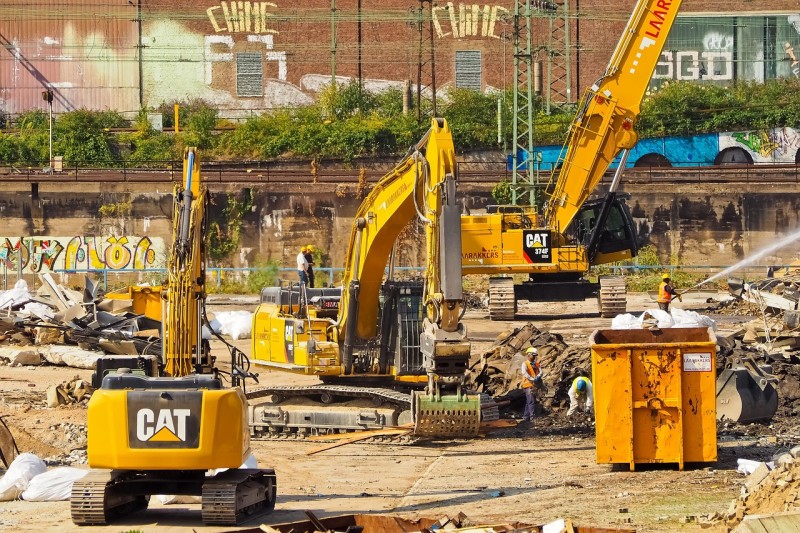Have you ever wondered how construction projects stay on track despite the many moving parts involved? It’s often the blueprint that makes it all possible. But what exactly makes this document so critical for ensuring a smooth, organised process from start to finish?
The importance of a blueprint extends far beyond mere sketches on paper. These detailed plans provide clarity, define expectations, and guide the construction process from initial design to the final structure. Without this, delays and costly errors are inevitable, highlighting their crucial role in keeping everything running on time.
Clear Project Vision and Direction
The first and most significant benefit of blueprints is the clear direction they provide. Construction projects typically involve multiple teams, including architects, engineers, and contractors, each with different responsibilities. An accurately printed blueprint serves as a central reference that ensures everyone is on the same page.
They lay out specific details about dimensions, materials, and construction methods, reducing confusion and enhancing coordination. This clarity helps all parties involved to work together efficiently. It reduces the chances of miscommunication that could lead to delays or mistakes.
Enhanced Communication Among Stakeholders
Effective communication is essential for keeping a construction project on schedule, and it serves as a vital communication tool. From the design team to the contractors and clients, everyone involved can refer to the blueprint. It helps for an accurate understanding of what’s expected.
Clear visual representations of the project help bridge the gap between technical experts and non-experts, allowing for smoother discussions. Stakeholders can easily track progress. They ensure compliance with the design, and quickly identify any changes or adjustments needed.
Efficient Resource Management
In construction, time is money, and managing resources efficiently is key to meeting deadlines. Properly printed blueprints play a pivotal role in this by outlining exactly what materials are needed and where they should be used.
With this information at hand, project managers can plan and procure the necessary materials well in advance, avoiding delays caused by shortages or last-minute orders. Additionally, by clearly specifying measurements and materials, they help prevent wastage. They ensure that resources are used optimally throughout the project.
Accurate Cost Estimations
One of the most challenging aspects of managing a construction project is sticking to the budget. Blueprints contribute to more accurate cost estimations by providing a detailed overview of the project. These plans allow estimators to calculate the exact amount of materials required.
The number of labour hours needed, and any other resources that may impact the overall cost. Without this level of precision, it becomes much harder to avoid unexpected financial setbacks. It could disrupt timelines and cause delays.
Simplified Permitting and Regulatory Compliance
Every construction project must comply with local regulations and obtain necessary permits. They are vital for this process, as they allow authorities to assess whether the project meets legal and safety standards. This ensures that the project can proceed without legal delays or complications.
A detailed, well-drawn blueprint makes it easier to navigate the permitting process. It ensures that the project meets all required codes before work begins. This reduces the risk of having to halt construction due to non-compliance or missing permits, ultimately keeping the project on track.
Streamlined Project Management and Scheduling
Managing a construction timeline is complex. With various tasks that need to be completed in a specific order. Blueprints simplify project management by providing a visual representation of the entire project, allowing managers to break it down into stages.
With this information, managers can create realistic schedules, allocate resources, and set deadlines for each phase of the project. This structured approach helps to ensure that the construction process moves forward efficiently. It will not cause any unnecessary delays or confusion.
Risk Mitigation and Problem Solving
Every construction project faces its own set of challenges, whether it's due to unexpected weather, supply chain issues, or unforeseen structural problems. Blueprints help mitigate these risks by offering a detailed blueprint for potential problem-solving. They provide a clear framework for identifying issues early and implementing solutions before they escalate.
With a comprehensive plan in hand, teams can quickly identify where things are going wrong, identify solutions, and make adjustments as needed. This proactive approach to problem-solving ensures that issues are addressed before they turn into significant setbacks. It allows construction timelines to remain as predictable as possible.
Facilitates Post-Construction Maintenance
Even after a construction project is completed, blueprints that are printed with advanced commercial printers continue to play a vital role. They provide detailed information about the building's layout, systems, and materials, which is invaluable for future maintenance and repairs. This ensures that any modifications or troubleshooting can be done accurately and efficiently, avoiding costly mistakes.
This long-term usefulness of blueprints ensures that building owners and maintenance teams can manage the structure effectively. It reduces the likelihood of extended downtimes and unnecessary repairs. It helps streamline future renovations or upgrades, saving both time and cost.
The importance of a blueprint in construction cannot be overstated. These essential documents serve as the foundation of every successful project, guiding everything from initial design to final build. By offering clear direction, streamlining communication, and supporting resource management, blueprints ensure that construction timelines are met with precision.
